Blizzard's Heroes of the Storm is a free-to-play multiplayer online battle arena (MOBA) that does a great job of making the genre accessible to newcomers.
Before the game actually begins, you step into the role of the mighty warrior Jim Raynor, of Starcraft fame, who has been selected to take part in the epic battles that rage within the Nexus. This is where you learn the basic gameplay and controls, under the guidance of none other than Uther Lightbringer from Warcraft. You can also play your way through training mode, where you can take your time and get a feel for the action in a stress-free environment.
Once you complete the tutorial and training mode, you're thrown into "real life", where you and your allies will face off against other players as well as AI enemies in epic pitched battles. You can either create your own matches and invite other players to join you, or you can select a match from a list of matches hosted by other players.
Before you enter the arena, however, you can choose the hero you wish to control from a selection of available characters from Blizzard's major franchises, including Warcraft, Starcraft, and Diablo. The game's "hero rotation" system allows you to try out several different heroes each week, with a diverse range of combat styles to choose from.
The focal point of all the action is the Nexus, a mysterious cosmic storm where worlds are collide with one another, often leading to violent clashes. This means that the setting will vary wildly from battle to battle, depending on which corner of the Nexus you currently find yourself in. Glory without end awaits the warriors who confront one another in the Nexus, provided they emerge from the battlefield victorious, of course.
Gameplay
From the very beginning of the game you are able to choose between four different difficulty levels: New, Casual, Veteran, and Master. No matter what your experience with MOBAs, you should be able to enjoy Heroes of the Storm at a level corresponding to your actual skill level.
To control your hero, you mostly use the mouse – click the right mouse button to move around, and the left mouse button to deliver a standard attack. You standad attack can be used at any time, and doesn't have a cooldown. Pressing and holding the A key will allow you to target specific enemies.
But as you might imagine, your standard attack doesn't really deal all that much damage, so each character, depending on the class you've chosen before starting the match, has a range of special abilities and talents at their disposal, which are selected using the keyboard. As a rule, special attacks do significantly more damage than standard attacks. Many of these special talents and abilities have status effects which can be used to weaken your enemies or provide buffs to your own character and allies. Of course, you'll have to wait a little while before you can use one of these skills/attacks a second time, and cooldown time is indicated by a countdown that lets you know exactly how long you have to wait before you'll be able to use it again.
Aside from the enemy heroes who make up the main opposition in any battle, there are other opponents to defeat, from weak ground troops who tend to attack in numbers to heavily armored towers that bar the path to the enemy base. Not only are these things protected by heavy armor, they also deal out their fair share of damage, so a bit of caution is advisable here. Fortunately, towers and other fortifications are stationary opponents with a rather limited range, and they are always accompanied by a red circle indicating their attack radius, so you can often take care of them with some decent ranged attacks from just outside the circle.
When you defeat an enemy, your whole team receives experience points, and each hero will level up at a the same rate. The same goes for the opposing team when they take down one of the heroes on your team. Each team's current level is displayed at the top of the screen, in the center. In the course of a battle, you'll eventually receive enough experience points to gain new talent points, which you can use to learn new abilities or to add extra attributes to the ones you already have. If a new talent is available, it will show up in the lower left corner of the screen, where you can click on it to learn and start using it right away. You can press the N key to get an overview of the various talents and abilities, and you can also adjust your character's abilities here and customize them according to your own wishes.
When your hero starts taking on serious damage, there are several ways to get yourself out of such a situation. The simplest solution is to immediately withdraw from the action and try to gain as much distance as you can between yourself and your attacker. Since your health refills whenever your team levels up, it shouldn't take long before you're ready to jump back into the fray. If you don't have time to wait, or there's just nowhere safe to pull back to, there are "healing wells" scattered throughout the map that will allow you to refill your health; though of course, the nearest well might be too far to reach in time. In this case, each player has a hearthstone, which will refill a good bit of their health and mana, but also teleports them back to Hall of Storms in your team's fort, separating you form your teammates.
But even when you can't get any relief and your hero ends up biting the dust anyway, that doesn't mean the battle is over. They just put you back in your own fort and make you wait a certain amount of time before letting you join your teammates on the battelfield. The time they make you wait gets longer each time you die, though, so keep that in mind.
As a rule, the main objective that must be completed before you can emerge victorious is to destroy the enemy's "core" within their fort. Each battelground will also have a variety of secondary objectives that will make make it easier for you to do this. All objectives, whether optional or not, are displayed on the right side of the screen, where you can always see them. Along with important enemy support positions, they're also displayed on the well designed minimap, which appears in the lower right corner of the screen. You can use the minimap to see where the action is, and if you are so inclined, figure out ways to get around it so you can launch a surprise attack on the enemy's fort. There's usually more than one way to reach your objectives, however, and it's up to you what path you want to take through the battleground. This versatility also makes it possible to coordinate with your teammates and close in on the enemy team from several sides at once. Also, if you ever feel like it'll take too long to walk from one point to another, each hero has a mount which you can use to get there faster.
Graphics
The opening sequence shown at the beginning of the game is really impressive with its detailed facial expressions, high-definition effects, and realistic animations. The actual in-game graphics tend to be more focused on creating the right feel than on the level of detail, which is of course standard for the MOBA genre, and shouldn't be counted against the game in any way. Quite the opposite, in fact – Heroes of the Storm does an excellent job of providing immersive environments, each with its own unique atmosphere.Sound While the opening sequence is backed by driving hard rock instrumentals to underscore the action-packed scenes it portrays, the gameplay is dominated by heavy orchestral music that matches the heroic deeds taking place on the battlefield, but sometimes they almost lay it on a bit too thick. There's really nothing bad to say about the quality of the music, though, and the voiceovers are great, not just in the original English, but also in the German version I played. Typical for Blizzard, your heroes make wry comments to accompany just about every action, and none of this seems to be lost in translation. I would imagine the same quality could be expected for other versions of the game. Currently Heroes of the Storm is fully localized in several European languages: German, French, Italian, Polish, Spanish (European); Latin American Spanish and Brazilian Portuguese; and two Asian languages: Chinese (traditional and simplified) and Korean.









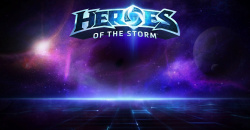
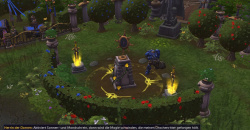
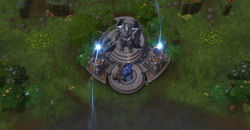
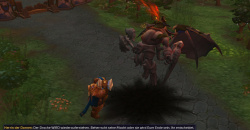
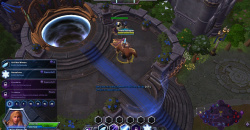

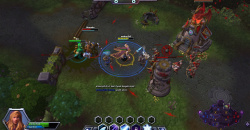
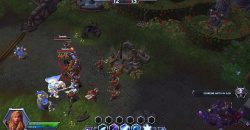
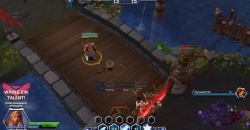

ssd